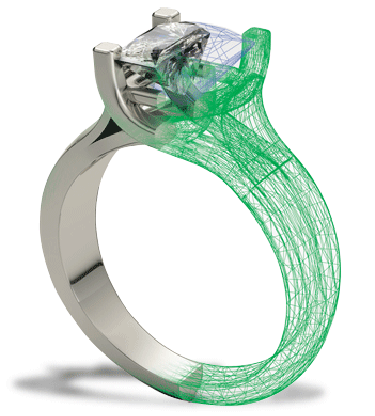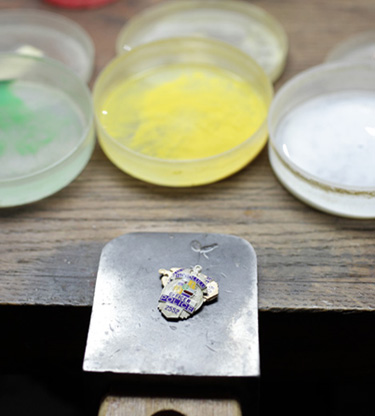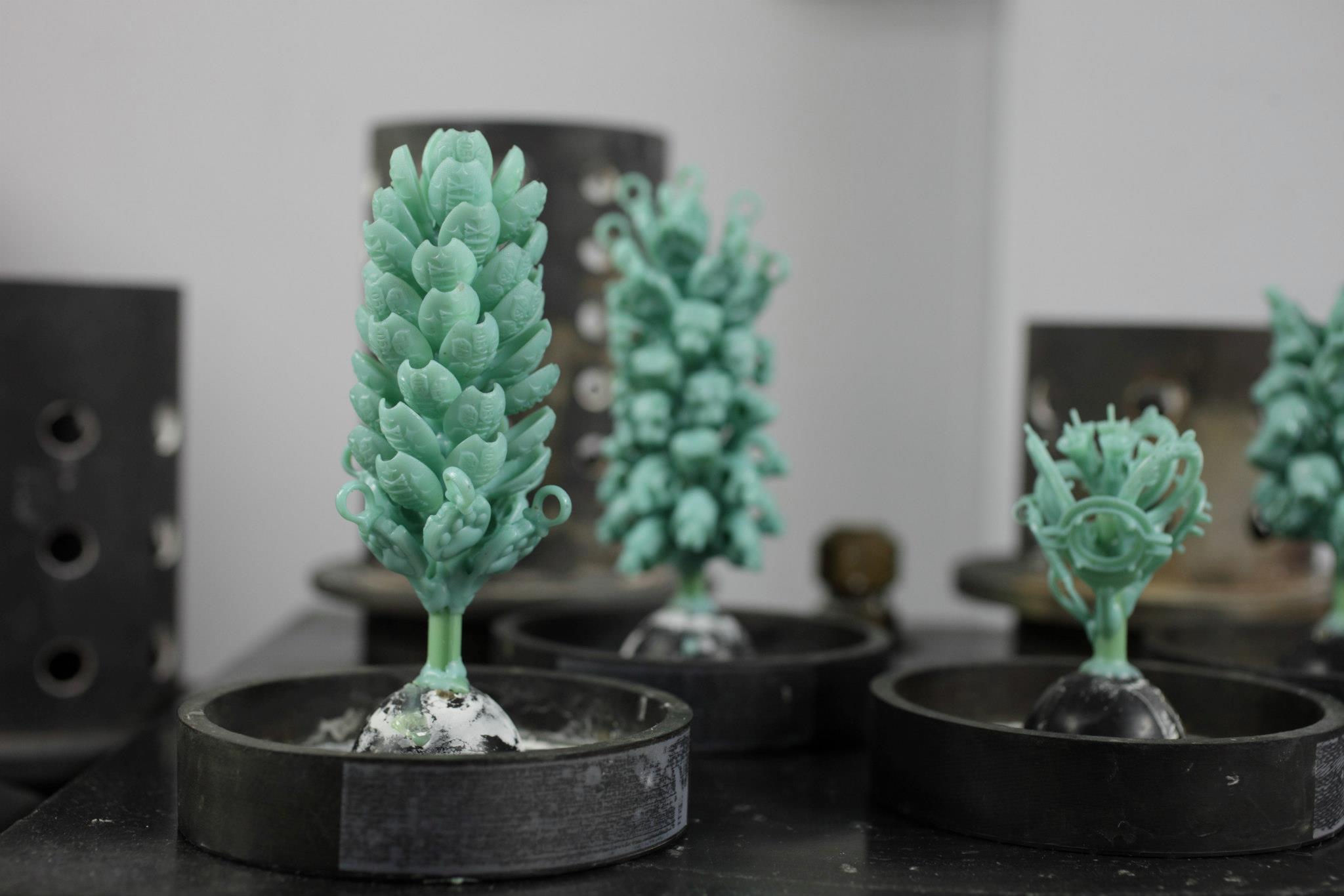Custom Design
Why choose custom designed jewelry? Because you get exactly what you want. You also are a part of the design process, which is as unique as the custom piece itself. We begin the design process by discussing ideas, inspiration, and your overall desired look. After approval of the design, we proceed with the fabrication of the custom item.
While the method of creating the metal framework may vary (e.g. hand fabrication, lost wax casting), after the metal work is complete, the piece is hand-finished. The final step involves hand-setting stones, texturing and polishing, which brings out the brilliance in the metal. We do our best to be accommodating to your budget. We will work with you on trading, melting or selling your old gold jewelry to offset the cost. When possible, we will use your own stones.


Die Striking
Die-striking is a technique used in coin production; we use the same method to create our Hawaiian Coat of Arms and Emblematic Jewelry. The design is cut into a tool steel-die, and then a blank metal plate is placed on top of the pattern and a multi-tonnage press is activated to press the metal into the design. The pressure is so great that the metal is actually semi-liquefied in the process. The precious metal plate is removed from the die, the pattern is trimmed, then hand finished. We manufacture jewelry as well as service awards in this fashion.
Please click on the link to view samples of items that we have manufactured with the die-striking process.
Glass Enameling
This is a technique of firing vitreous material (glass enamel) onto a precious metal base, often in multiple layers to achieve a smooth, flush, blemish-free surface. Glass enamel is ground into a powered form using a mortar and pestle, sifted for grade, then mixed with water to create a thick slurry.
The layers are applied by hand, taking care to coat evenly all areas to be colored. Then it’s allowed to dry, and it is then fired in a kiln to a molten state, removed and allowed to cool slowly. During the cooling process flakes of glass will pop off with a ping, creating low areas to be filled during the second and sometimes third coat.
The finished piece is pickled in a mild acid to remove the oxidation from the exposed metal and then high polished to a desired finish and readied for the hand-engraved highlights.


Hand Fabrication
<p>Hand-fabrication is the process of creating something with metal completely from scratch. The piece starts as 24kt gold and is alloyed into 18kt, 14kt, or 10kt at the customer’s discretion. It is then melted into a molten liquid state, poured into an ingot, and then rolled into a flat plate and/or wire of varying gauges, widths, or shapes. The plates or wires are then cut, shaped, and assembled using a gold solder.
A custom piece may consist of a single piece or may fit together like a jigsaw puzzle with multiple pieces and dozens of solder points.</p>
Lost Wax
A model is created from wax and cast into metal. Wax-carving is like sculpturing but in miniature. The jeweler starts with a block of carving wax – a sketch, a photo, or a visualized design – and then begins manipulating the wax model using coarse files, heated wax pens, high speed rotary tools and/or picks similar to those found in a dentist’s office.
The wax model is formed, creating an exact replica of what the piece will look like in metal form. The wax is placed in a metal cylinder and a plaster-of-Paris type substance (called an investment) is poured over the model then placed into an oven and the wax is burned out, leaving a cavity of the existing design for molten metal to be poured. The turned metal piece is extracted from the investment, polished, and stones or finishing techniques are applied.

